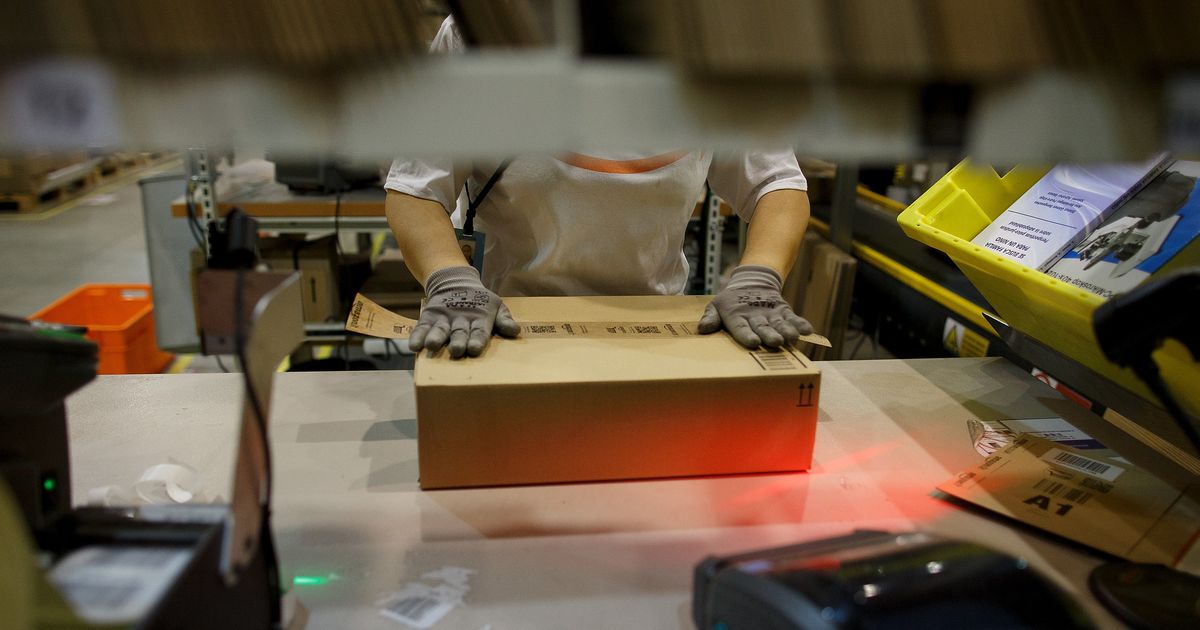
Amazon revealed on its latest earnings call that it controls the fates of 1.3 million employees, not counting temporary workers.
On Monday in Alabama, more than 5,800 of them will be able to vote on whether to become the first Amazon warehouse in the United States to unionize.
“Now it’s our turn to be a disruptor,” said Elizabeth Shuler, secretary-treasurer and second highest-ranking officer of the AFL-CIO, the largest federation of unions in the United States.
It’s a big day for the AFL-CIO. Not only is it providing guidance to the Retail, Wholesale and Department Store Union, which is organizing the Amazon warehouse workers. It also recently launched a think tank, the Technology Institute, partly meant to help workers at tech behemoths like Amazon organize.
Other tech companies are waging similar battles. Microsoft workers protested the company’s lucrative military contract. And Google is facing a unionization effort by hundreds of its own employees.
“These companies might seem unique, but they’re just like every other corporate actor that we deal with.”
“These companies might seem unique, but they’re just like every other corporate actor that we deal with,” said Shuler said. “You have to keep them in check.”
To help do that, the Technology Institute is working with academic partners, including the Block Center for Technology and Society at Carnegie Mellon University, to build tech tools to help workers organize. (Shuler wouldn’t elaborate on specific tools, noting the lengths companies have gone to surveil and stymie unionization efforts.)
The AFL-CIO hopes the Technology Institute can become a “center of gravity” for engineers, academics, affiliate unions, and the “broader workers’ rights movement” to develop tools and strategies for organizing, said Amanda Ballantyne, director of the institute.
Not that it will rely on technology alone. Funded by the AFL-CIO and affiliate unions, the Technology Institute will — like most think tanks — conduct research in hopes of swaying public opinion and policy.
Technology is advancing rapidly. Labor regulations, not so much. In 2009, when the national minimum wage was raised to $7.25 an hour, Uber didn’t exist.
It’s 2021. The national minimum wage hasn’t changed. Meanwhile, a new “gig economy” has emerged.
Last year, Uber, Lyft, and other scions of the gig economy spent more than $200 million on Prop. 22 to keep workers classified as “independent contractors,” as opposed to employees with benefits. They won. Soon after, delivery drivers for Southern California grocery chain Vons were fired to make way for outside gig workers.
The labor movement is learning how to “maneuver through this new world,” Shuler said, both with technology and policy reforms. The AFL-CIO and President Joe Biden support the Protecting the Right to Organize (PRO) Act, reintroduced by Democrats in the U.S. House and Senate on Thursday, which would close loopholes used by gig-economy companies to avoid giving workers benefits and labor protections.
Ultimately, Shuler said, the Technology Institute wants to work “upstream” with tech companies and policymakers, instead of trying to repair the damage after it’s done.
“We should be meeting and talking with the designers of technology,” she said. “We should be making sure that innovation policy includes a worker perspective.”
As for the workers in Alabama, they face stiff opposition from Amazon, including anti-union leaflets, meetings, text messages, and even fliers in the bathroom. They have until March 29 to vote on whether to unionize.
